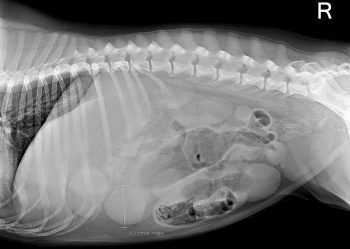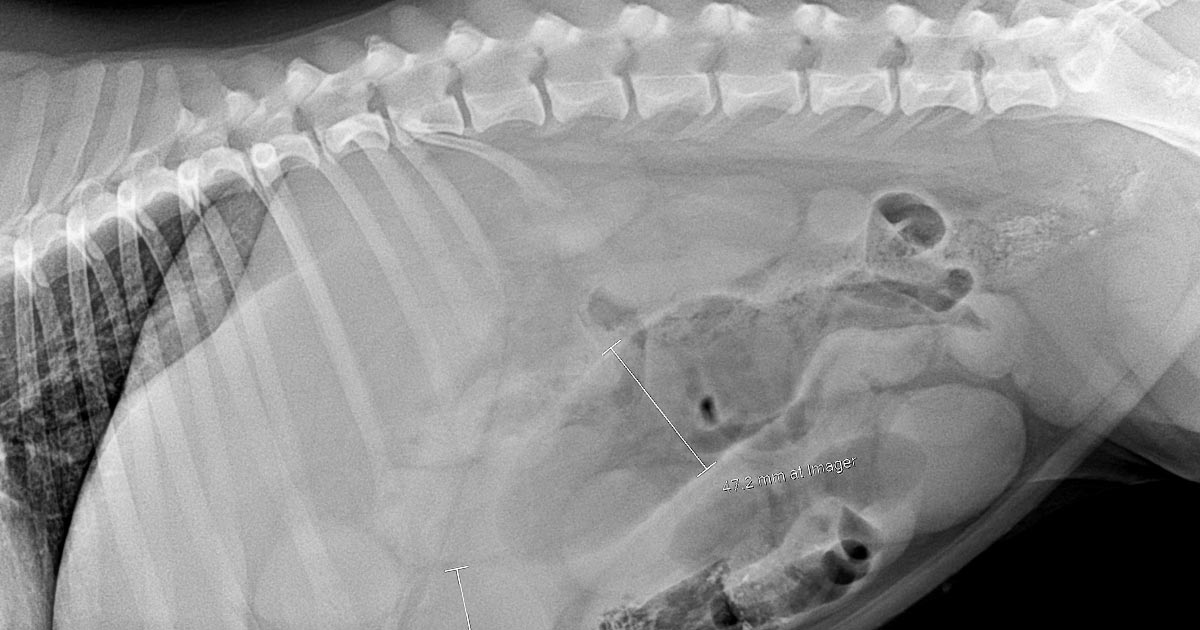Last week’s tips (Abdominal radiography, part 1) were about taking appropriate images.
Now, here are some tips on interpreting those images.
Interpretation

I often find there is too much to look at and it gets confusing with overlapping organs. I like to step back and look from a distance; sometimes, this gives me an overview of the image first.
Next, I use a systematic approach, starting with extra-abdominal structures and working inwards.
Then I assess the main organs – liver, spleen, kidneys, bladder and prostatic region – and assess for a uterus. Once I have identified and assessed those, I look at the gastrointestinal tract (GIT).
What part of the GIT is it?
This can be the most confusing part. I start with the stomach, assess size and position, then identify and track the colon from caecum to rectum. Once I’m happy I have identified the stomach and colon then everything else with gas in it is likely to be small intestinal.
Enema and a walk
If there is too much faeces, or if the gas is colonic, I administer a suppository enema to facilitate defecation. This can dramatically clear up a confusing x-ray and move gas.
Repeat the study
If I am still concerned about an obstruction, but it is not obvious, I either transition to an ultrasound or repeat the abdominal study after a couple of hours of IV fluids and pain relief.
I find, once a patient is rehydrated, the GIT starts to move; gas and faeces shift and things can look surprisingly different in a couple of hours. If it remains the same, or worsens, that also provides valuable information.
Consider high GIT and partial obstructions
Don’t forget pyloric, high duodenal and partial obstructions that don’t give you the classic small intestinal dilation. The absence of a radiopaque foreign body or gas dilated small intestines do not rule out an obstruction.

Leave a Reply